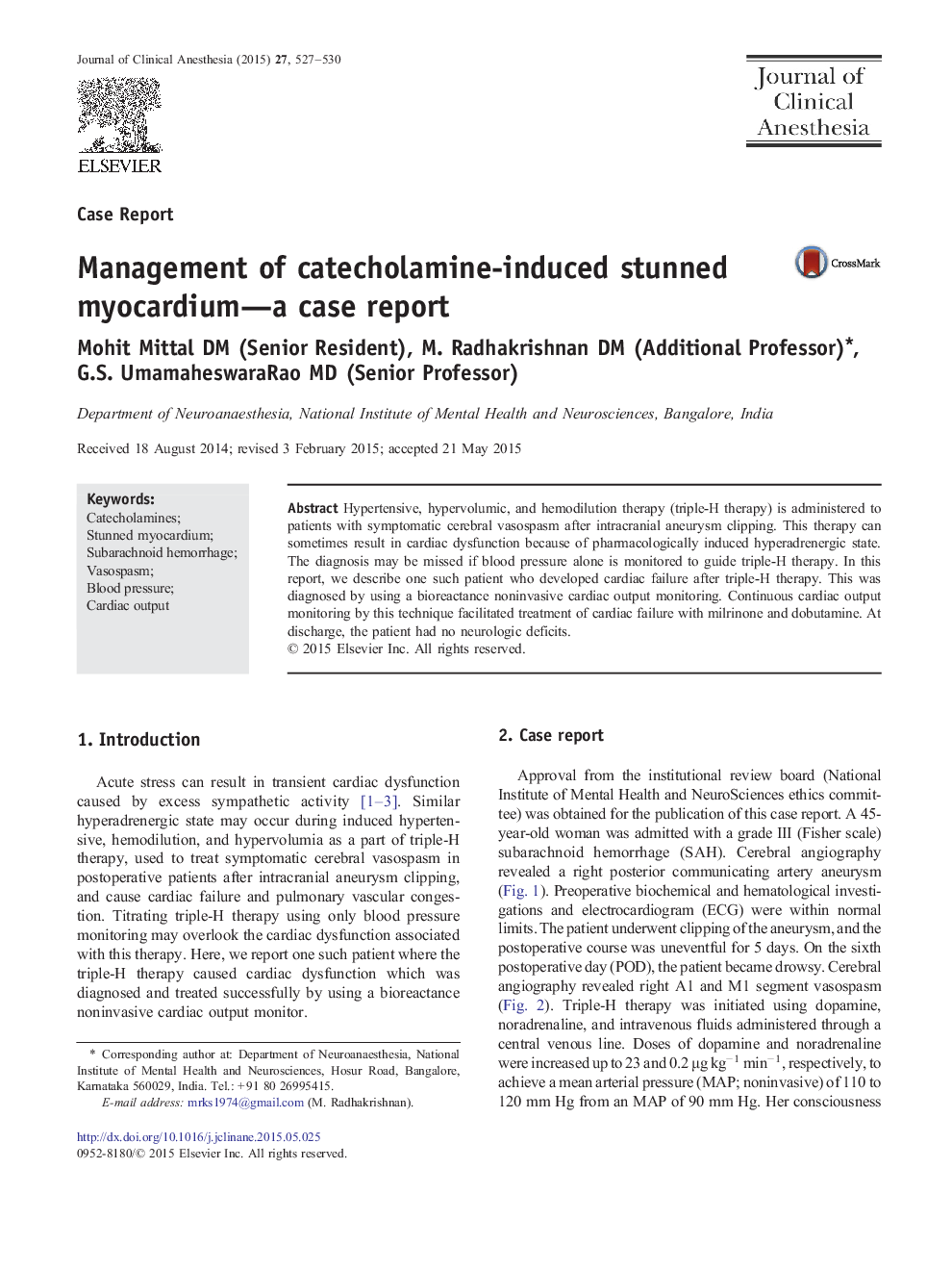| Article ID | Journal | Published Year | Pages | File Type |
|---|---|---|---|---|
| 2762234 | Journal of Clinical Anesthesia | 2015 | 4 Pages |
•Triple-H therapy resulted in catecholamine induced cardiac dysfunction.•Invasive blood pressure monitoring alone overlooks cardiac dysfunction.•Continuous advanced hemodynamic monitoring of cardiac output is required for appropriate combination of ionotropic agents.
Hypertensive, hypervolumic, and hemodilution therapy (triple-H therapy) is administered to patients with symptomatic cerebral vasospasm after intracranial aneurysm clipping. This therapy can sometimes result in cardiac dysfunction because of pharmacologically induced hyperadrenergic state. The diagnosis may be missed if blood pressure alone is monitored to guide triple-H therapy. In this report, we describe one such patient who developed cardiac failure after triple-H therapy. This was diagnosed by using a bioreactance noninvasive cardiac output monitoring. Continuous cardiac output monitoring by this technique facilitated treatment of cardiac failure with milrinone and dobutamine. At discharge, the patient had no neurologic deficits.
